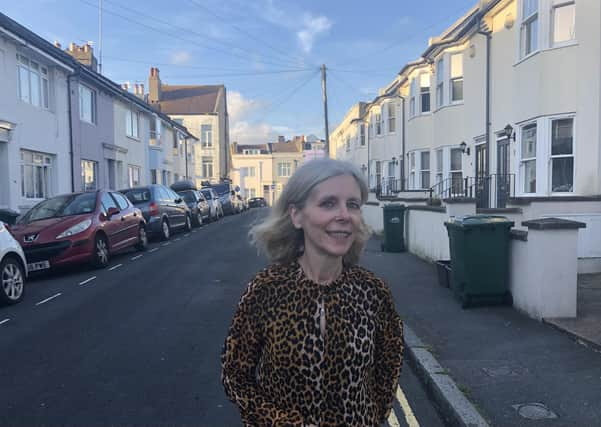Ideas for Brighton’s first Liveable Neighbourhood Scheme discussed


An online webinar held last Thursday brought together residents and experts to discuss ideas for the pilot scheme, which was given the go-ahead from the council last year.
Low Traffic Neighbourhoods (LTNs), which have been successfully introduced by councils across the country, are primarily designed to reduce the amount of motorised traffic from outside the area cutting through residential streets.
Advertisement
Hide AdAdvertisement
Hide AdThey also result in more people-friendly streets that work better for disabled people and residents of all ages.


Councillor Elaine Hills, who hosted the webinar, said many drivers followed their Satnav’s directions down the area’s narrow streets to shave a couple of minutes off their journey, which had an impact on the community.
“It just made us feel really vulnerable,” she said. “Some streets are really narrow. They were not set up for the volume of cars that we have.”
The LTN scheme could help solve this issue by introducing traffic filters, creating one way systems or installing planters in the streets, which have been proven to slow down traffic.
Advertisement
Hide AdAdvertisement
Hide AdMs Hills stressed that disabled people would still be able to use their cars and emergency vehicles would still have access to the area.
Parking spaces would not be removed, as she said residents wanted to be able to park outside their homes.
However the scheme will promote car sharing and see more bike storage installed, so that ‘eventually there will be reduction in the need for car ownership’.
“Most people’s cars sit in the road taking up space 95 per cent of the time,” Ms Hills said. “We need a bit of a paradigm shift in how we use our public space.”
Advertisement
Hide AdAdvertisement
Hide AdAs the LTN scheme develops, residents are being asked to come up with their own ideas about what they want to see in their street.
A digital pinboard has been set up online for people to post their thoughts and a network of street representatives have been appointed to collect feedback from neighbours.
Ms Hills said one of the most popular suggestions so far included more trees in the streets, while others wanted to see more benches and areas for socialising.
Key to the process is getting input from people with different abilities, she said, including the elderly, the young, people with mobilities issues and the partially sighted.
Advertisement
Hide AdAdvertisement
Hide AdChildren at local primary schools were invited to design their ‘dream street’ as part of the project, and came up with some ‘really imaginative ideas’ which will be exhibited at Jubilee Library in September.
“If we are going to make a change in our community that benefits everyone, that has to include the most vulnerable in the community,” Ms Hills said.
One of the speakers at the webinar on Thursday was Chantal Spencer, a designer, blogger and disability activist who is currently studying for a masters in Sustainable Design at Brighton University.
She uses a mobility scooter and spoke about the difficulties people with disabilities face when trying to get around in the community.
Advertisement
Hide AdAdvertisement
Hide AdJust leaving her home required a ‘huge’ amount of planning, she said, including mapping her journey door to door on Google Maps to see whether the route included the dropped kerbs she requires to get about.
Many streets in the Hanover and Tarner area had only one dropped kerb at the beginning of a street but not the other end, which was ‘not helpful’, she said.
‘Street clutter’ along the narrow streets – from bins and recycling boxes outside people’s doors to bicycles tied onto lampposts – also made it difficult to navigate the area, and as a result she said: “I don’t visit it, even though some of my best friends live there.”
Chantal said people with disabilities were often prevented from shopping and spending money in their local area because it was inaccessible to them, and were instead forced to drive further afield to big supermarkets.
Advertisement
Hide AdAdvertisement
Hide AdOne of her ideas for improving accessibility in shops in Hanover and Tarner was creating window hatches through which people could be served without having to enter small shops.
She told attendees at the webinar: “At the end of the day there are more disabled people around than you’d think.
“But if we all have to be in our cars driving to Tesco then no one ever sees them.”
While some issues in the area were insurmountable – there is no way to flatten Southover street to make it easier for people in wheelchairs to use, for example – she said important changes could be made to give people more freedom.
Advertisement
Hide AdAdvertisement
Hide AdChantal said the liveable neighbourhood scheme was ‘awesome’, adding: “This is exactly what we need, where we need to be putting our energies into, making sure we are trying to bring back more of a community spirit.”
A consultation on the scheme is due to take place later this year, before it is implemented in Spring 2022 for a trial period of around 18 months.
Find out more about the scheme at hanoverandelmgrove.net